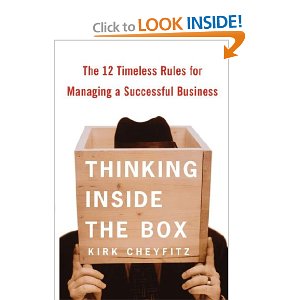 As I explained in Tuesday’s post titled “Happy Philanthropy Day 2012,” I was in Rochester, MN helping the Southern Minnesota Chapter of the Association of Fundraising Professionals celebrate National Philanthropy Day. There were awards for philanthropists and fundraisers. Training sessions were offered to both staff and board. It was uplifting, celebratory, engaging, and education.
As I explained in Tuesday’s post titled “Happy Philanthropy Day 2012,” I was in Rochester, MN helping the Southern Minnesota Chapter of the Association of Fundraising Professionals celebrate National Philanthropy Day. There were awards for philanthropists and fundraisers. Training sessions were offered to both staff and board. It was uplifting, celebratory, engaging, and education.
People typically turn holidays into opportunities for gift giving, and I don’t believe Philanthropy Day should be any different. Obviously, the Southern Minnesota Chapter was very thoughtful in their gift giving when they decided to give the gifts of recognition and professional development to their members and the Rochester community’s philanthropic community.
When I thought about what I should give the readers of this blog for Philanthropy Day, it was an idea that came to me very quickly.
At the end of one of the training sessions I had facilitated, I asked that very talented group of fundraising professionals to engage in a brainstorming session around what a set of donor centered fundraising policies might look like for a typical non-profit organization. I did this because in my travels I just haven’t seen many agencies tackling this project. So, my gift to you this Philanthropy Day is that I will share the results from that exercise. (A special thanks to the Southern Minnesota Chapter for collaborating with me on this gift.)
Before I begin, I should mention that there was a robust discussion about whether or not this list should be “policies” or something else (e.g. practices, procedures, parts of a plan). Regardless, we did build consensus around the idea that this list should begin with a “P”. 😉
The following is a draft list of ideas and is intended to get you and your resource development committee discussing possibilities:
- [gifts of X amount] get a phone call from a board volunteer within [Y number of days] of sending out the initial acknowledgement letter.
- [gifts of X amount] get a phone call from a volunteer and client within [Y number of weeks or months] of sending out the initial acknowledgement letter. This call should include verbiage that conveys a sense of what the donor’s contribution has helped produce.
- A written policy on when to “discontinue contact” with a donor.
- A written policy that speaks to the idea of how to handle donor data (e.g. sale of lists, distribution of reports, etc)
- [asks of X amount] must always be done face-to-face with someone who has a relationship with the donor participating in the solicitation.
- A written policy pertaining the collection, capture, and use of donor centered data (supported with training)
- A procedure written about the board mentoring policy specific to how board members model participation in a donor centered fundraising program
- A written policy about pledge payment options designed in a donor centered way (e.g. how about asking the donor to what is most convenient for them rather than just depending on them to check boxes on a form)
- A written policy dealing with donor confidentiality of information (and perhaps engage donors in helping write that policy or give input via a focus group)
- A written procedure for sending a personalized gift acknowledgement letter within [X number of days] that includes the following information: 1) confirmation that the gift was received, 2) expressed appreciation and excitement for the gift, and 3) a reaffirmation of what the gift will be used for.
- A written policy or procedure clearly stating that there must be [X number of cultivation/stewardship touches] in between solicitations. (Note: the group who offered this recommendation suggested seven might be the right number)
- A written policy or procedure on issuing a press release for all gifts larger than [X size gift]
- A written policy or procedure on sending letters from beneficiaries/clients to donors to demonstrate thanks and illustrate impact/ROI.
- A written policy or procedure on when a board member signature should appear on a gift acknowledgement letter
- A written policy or procedure on when handwritten notes should be used in addition to the donor database generated letter
- A written policy or procedure addressing the issue of when and with whom to use “events” to cultivate/steward donors (Note: please note they were not referencing fundraising events but rather friend-raising events)
Again, a special thank you to the Southern Minnesota Chapter of the Association of Fundraising Professionals for helping me produce a thoughtful blog post that doubles as a great Philanthropy Day gift.
What do you plan on doing on Philanthropy Day? It could be as simple as calling a special donor (regardless of whether or not they are a donor to your agency) and thanking them for what they do. Or you could scroll down and use the comment box below to add one more suggestion to the list that was started above.
Here’s to your health!
Erik Anderson
Founder & President, The Healthy Non-Profit LLC
www.thehealthynonprofit.com
erik@thehealthynonprofit.com
http://twitter.com/#!/eanderson847
http://www.facebook.com/eanderson847
http://www.linkedin.com/in/erikanderson847



















